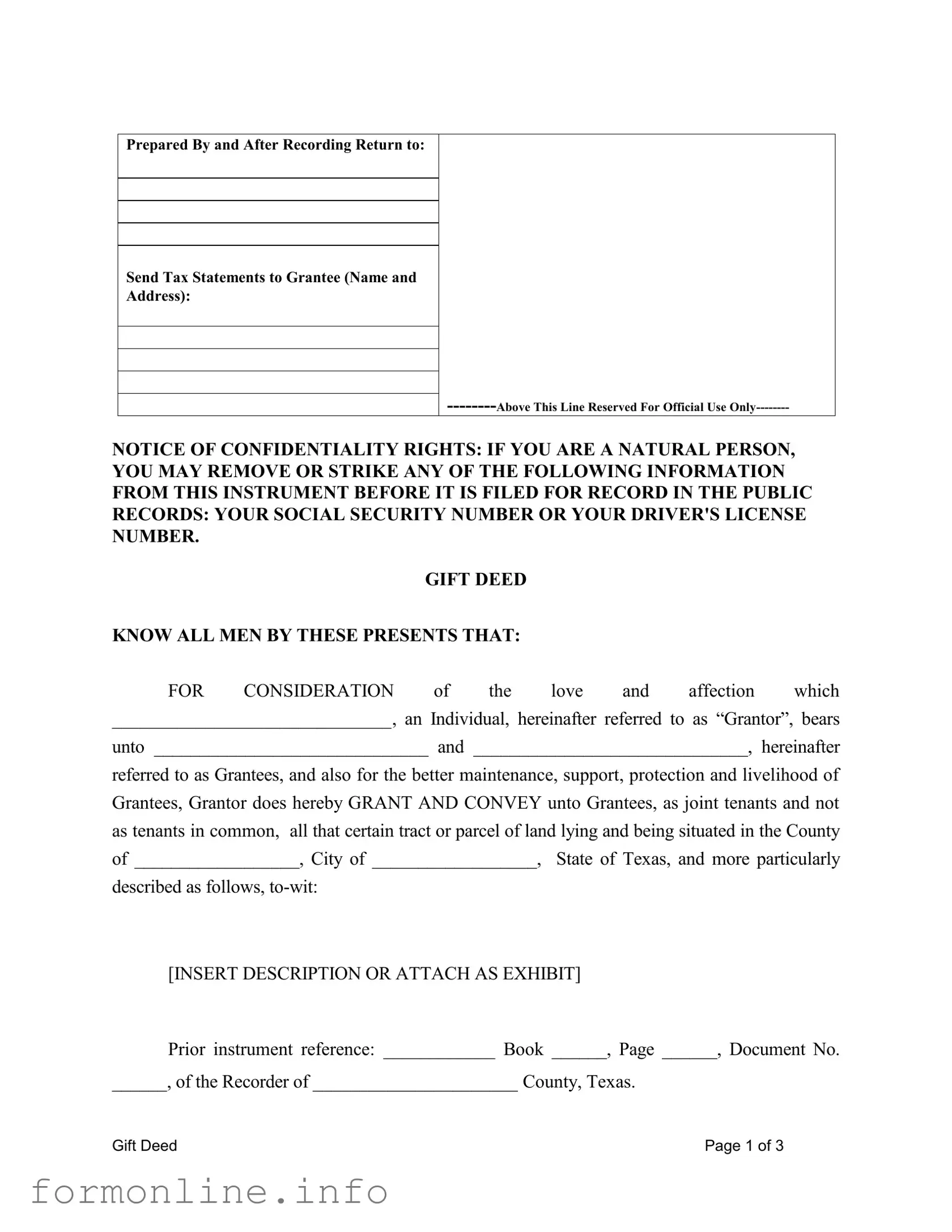The Gift Deed in Texas shares similarities with a Warranty Deed, which is commonly used in real estate transactions. Both documents serve to transfer ownership of property from one party to another. However, while a Gift Deed conveys property without any exchange of money or consideration, a Warranty Deed guarantees that the seller holds clear title to the property and is responsible for any claims against it. This distinction is crucial; the Warranty Deed offers a level of protection to the buyer that is not present in a Gift Deed, which is often based on trust and personal relationships.
Another document similar to the Gift Deed is the Quitclaim Deed. Like the Gift Deed, a Quitclaim Deed transfers ownership of property but does so without any warranties regarding the title. This means that the grantor does not guarantee that they have any ownership interest in the property being transferred. While both documents can be used to transfer property between family members or friends, the Quitclaim Deed is often used in situations where the parties know each other well, as it carries more risk for the grantee.
When dealing with tax documentation, it's important for individuals to understand the various forms available to them, such as a Sample Tax Return Transcript form, which details an individual's tax return status with the IRS. For those needing to access this specific documentation for verification or financial planning purposes, you can download the form to ensure you have the right information at hand.
A Transfer on Death Deed (TOD) also resembles the Gift Deed in its purpose of transferring property. The key difference lies in the timing of the transfer. A Gift Deed takes effect immediately upon signing, while a TOD Deed allows the property to pass to the beneficiary upon the death of the owner without going through probate. This can be a strategic choice for individuals looking to simplify the transfer of their estate, while still retaining control over the property during their lifetime.
The Special Warranty Deed is another document that bears similarities to the Gift Deed. Both documents involve the transfer of property, but a Special Warranty Deed provides limited warranties from the grantor. The grantor only guarantees that they have not caused any issues with the title during their ownership. This contrasts with the Gift Deed, which does not include any warranties at all. As a result, the Special Warranty Deed may offer some reassurance to the grantee regarding the title, even though it does not provide the full protections of a Warranty Deed.
A Bill of Sale is also related to the Gift Deed in that it can be used to transfer ownership of personal property, rather than real estate. While the Gift Deed specifically pertains to real property, a Bill of Sale can be utilized for items such as vehicles, furniture, or equipment. Both documents can be executed without monetary exchange and rely on the intent of the parties involved. However, a Bill of Sale does not require the same level of detail regarding the property description, making it a more straightforward option for personal property transfers.
Lastly, the Deed of Trust can be considered similar in that it involves the transfer of property interests. However, a Deed of Trust is primarily used in financing transactions and establishes a security interest in the property for a lender. While a Gift Deed conveys ownership without any financial obligation, a Deed of Trust creates a lien against the property, which serves as collateral for a loan. This fundamental difference highlights the distinct purposes these documents serve, even though both involve the transfer of property interests.



